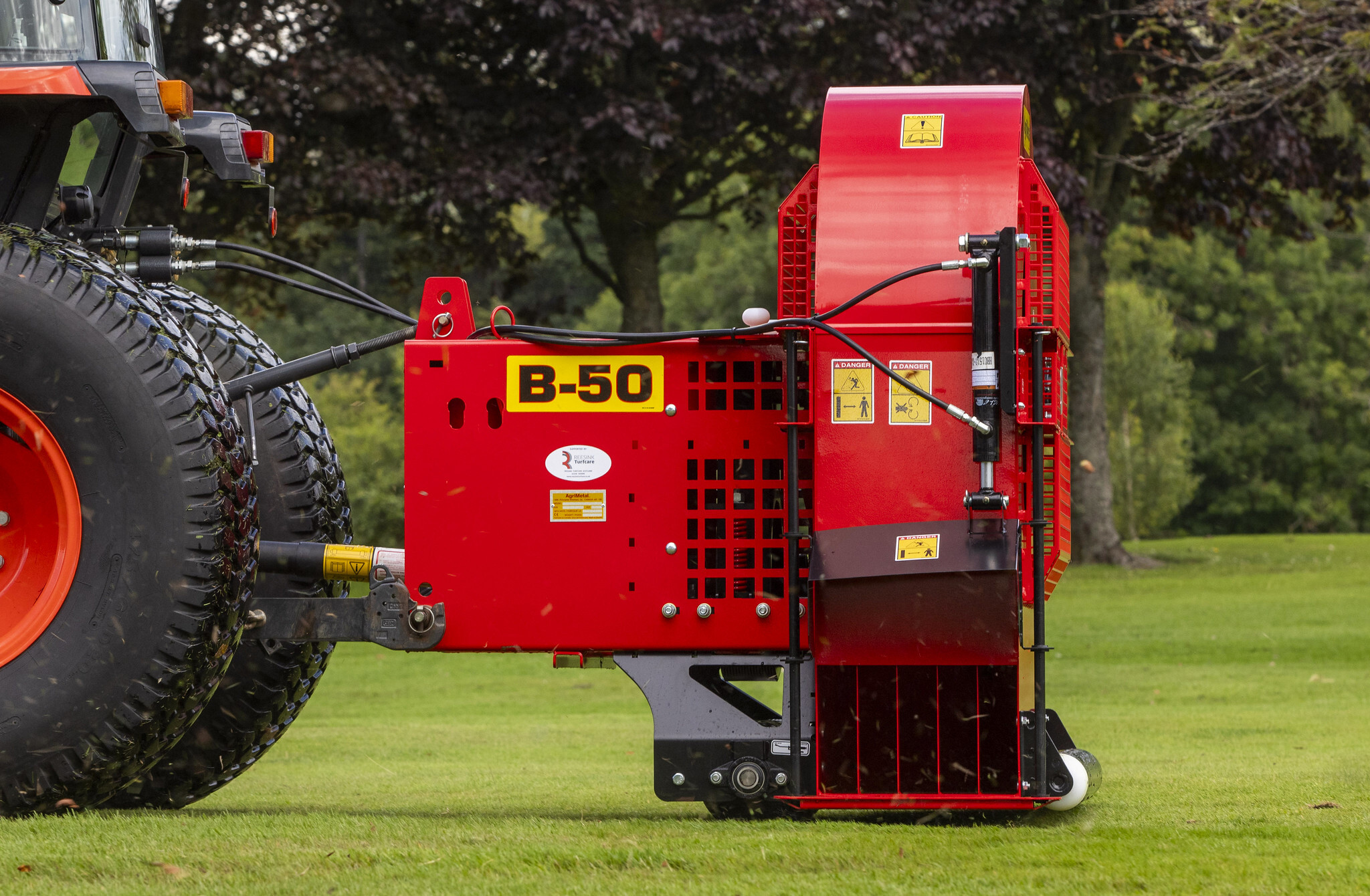Leaf clearance made easy
Autumn for turfcare professionals means one thing: leaves – and lots of them. Millions of kilos of leaf debris cover golf courses, parks, play areas, pathways and driveways. They can affect play, cause an eyesore, pose a danger and lead to damage.
Unseasonably strong winds and heavy rain have swept the country this summer and there’s no sign of that changing as we head into autumn. And those conditions make a perfect storm for premature, fast and furious leaf shedding.
Here award-winning distributor Reesink UK, who distributes a range of leaf and debris blowers and collectors from Toro and AgriMetal in the UK, discusses how to make an essential autumn maintenance job easy.
How does a leaf blower work?
Leaf blowers are designed to generate enough airflow to move plant debris, usually leaves, into piles by blowing air through a chute, or by sucking air up the chute to vacuum them into a container/bag.
Why is it so important?
It’s not just an aesthetic consideration, autumn debris can cause damage – it can create slippery conditions and ruin grass. If not cleared, the damage to even the toughest and roughest of lawns can be long lasting. In a nutshell, leaves can smother the grass and kill it in just a few weeks, they can allow moss to take over, disease to take hold and thatch to form. Ideally leaves should be cleared from the grass at least once a week.

Toro’s Pro Force debris blower is ideal for clearing grass clippings, leaves, chaff, and other debris from fairways, clubhouse grounds, fence lines, paths, and other paved areas.
Choosing your tools
When gathering your arsenal, you need to make sure the tools selected are as efficient as possible and tailored for the task and size of the job.
While handheld tools do well in domestic applications, most grounds maintenance businesses look after extensive open areas and need more heavy-duty attachments for productive, efficient, headache-free operation that can cover vast amounts of ground.
Power
First, it’s important to look at the power required. This usually means the combination of CFM (cubic feet per minute) – or how much the blower/collector pulls in or out – and the MPH (miles per hour) – or how fast the air moves. A high CFM blows or sucks many leaves at once and farther away, whereas a high MPH moves heavier debris or wet leaves easily.
When in doubt, it’s always better to go for a higher CFM and MPH combination to make sure you have a tool that can tackle anything you throw at it.
Capacity
The other thing to consider, if you are looking at collectors, is the capacity: the bigger the compartment you have to work with, the longer you can go without having to stop to empty it, improving productivity. This also means there’s less risk of the machine clogging due to excess or overflow if the operator doesn’t check the compartment often enough.
Again, it’s always best to go with more capacity than you think you require than end up with less.

Toro’s ProLine H800 high-volume collector at The Mere Golf Resort.
Hand-held or attachment
As for the actual type of blower or collector, there are quite a few to choose from. For commercial businesses that already own a tractor or a utility vehicle, we recommend ones that can be attached to the vehicle via the three-point hitch: they are unbeatable when it comes to performance as well as convenience.
They’re large and powerful but don’t need to be pulled or held manually (the vehicle does all the work) so you don’t have to worry about the effects on your physical health and enjoy much less tiring operation.

The AgriMetal Tuff Vac can be towed by a smaller tractor or larger utility vehicle, pictured here with a Farmtrac model.
Noise level
Blowers and collectors tend to be noisy machines: the air coming in and out through a nozzle and the rumble of the unit’s engine will naturally produce some level of noise, which can be measured in decibels.
This can cause a problem depending on the type of environment you’ll be working on, but it doesn’t have to: tractor-mounted attachments, for instance, have reasonably low decibel levels for the size of the machine so they can be used in sensitive environments like residential areas, golf courses and urban sports grounds.
Equipment
When it comes to the machinery you need for fast, efficient leaf clearance for golf courses and green spaces, Reesink deals in the big stuff.

Previously relying on manual backpack blowers, clearing the course of debris was tying up two greenstaff for a day. With the AgriMetal B50 blower Peebles Golf Club can do the same job in just a fraction of the time.
For the golf course
Every tee box, green, dip and undulation on a golf course is like a magnet for drifting leaves, twigs, pine needles and more. Clearing debris away to return to the playing conditions golfers expect can be time consuming. The ProLine H800 is a single machine, mower and collection system that quickly clears away debris into a 214-gallon capacity system in one pass. It has a cutting width of 50ins and uses its Smart AirFlow system to move clippings and debris from the cutting deck surface to the hopper to leave a clear path of grass in its wake.
The Pro Force debris blower is the ideal choice for clearing grass clippings, leaves, chaff, and other debris from fairways, clubhouse grounds, fence lines, paths, and other paved areas. With an abundance of air volume flow from the single nozzle turbine-style debris blower, it’s built to move a lot of debris — farther and faster — in little time. It has the force to send even wet, heavy leaves flying in the direction you want them to go. The single-piece, impact-resistant plastic nozzle is moulded to resist damage, helping to reduce downtime and lower repair costs.
For green spaces
AgriMetal has three tractor-mounted blower models to choose from: the B25, B35 and B50 for 25hp, 35hp and 50hp at the PTO respectively. They have an aluminium impellor, a maximum of 91 decibels and an exclusive design that increases airflow CFM by around 25 percent compared to other blowers in the market.
You can work in the worst conditions without marking or compacting the turf, which is particularly useful for sports surfaces, especially on turns. In fact, the roller will often repair imperfections on the turf.
As for collectors, AgriMetal’s Tuff Vac comes in two variants: PTO driven for use with a 35hp+ tractor, or with its own 27hp engine, allowing it to be towed by a smaller tractor or larger utility vehicle. The Multi Vac is pulled and powered by any 50hp or higher tractor. Both deliver a simple but effective proposition with the Tuff Vac having a 50 percent bigger exhaust area than some competitive models meaning more vacuum and less clogging.
